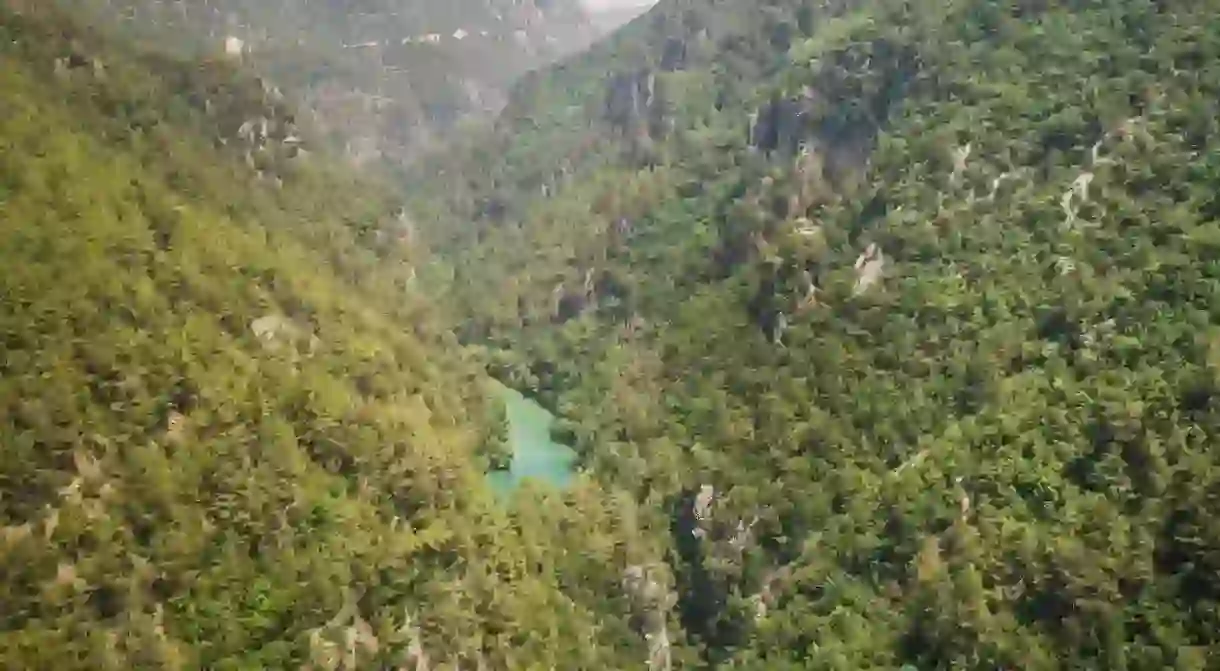Lebanon's Nahr Ibrahim Valley: A Hike Across Myth and Faith

Though rarely featured in guidebooks, Nahr Ibrahim Valley’s fascinating past and humbling natural environment are certainly worth a visit.
Dominated by spectacular mountains, Lebanon is famous for its dozens of steep, winding valleys that have taken on a deep cultural significance for the country’s people. A walk through the Nahr Ibrahim Valley, which lies not far from the ancient city of Byblos north of Beirut, shows that it is one of the most underrated parts of Lebanon’s mountainous interior, an area that is otherwise teeming with activity.
A Place of Legends
“Nahr Ibrahim” means “The Abraham River” in Arabic, and the valley that surrounds it has an important place in the mythology of both the Greeks and the people of Phoenicia, one of the first civilisations to call Lebanon home. In those ancient days, the valley’s main claim to fame was its association with the Greek god Adonis, who was said to have been killed here by a boar on the orders of the god Ares. Every spring the waters of the Ibrahim River turn red from silt, which is said to signify the blood of the dead god.
Today, this legend persists, and the valley’s mythological allure is amplified by the countless ruins left by the Romans, Greeks, Phoenicians, and others that dot the mountainsides. But by far the main reason people come to visit this place is its stunning natural beauty. The sides of the valley quickly become steep as you follow the road up into the mountains, with sheer, vertical towers of stone protruding out of the gorge below.

Surreal Surroundings
The handful of Lebanese tourists who visit this valley generally stop their ascent at the quaint Maronite Christian village of Chouwen, from where a popular hike takes trekkers down a forested staircase to a lake, where the Ibrahim River slows down and widens. Here, the water is a brilliantly turquoise, and although it’s technically forbidden, many choose to swim in the frigid river and swing from a rope hanging from a tree on the other side.
Despite its beauty, the Chouwen trail is a victim of its own relative popularity, and hikers have unfortunately littered its surroundings with trash. For a more secluded and unspoiled experience in this valley, start hiking from the isolated hamlet of ‘Ibri – and experience a side of this valley that few casual visitors ever do. Like many things in Lebanon, the trail out of ‘Ibri starts off fairly well marked with signage and trail maps, but quickly seems to veer off course and is only marked by caution tape hanging from trees every few dozen meters. But the views from this trail are stunning, and unlike on the Chouwen trail, chances are you’ll enjoy them all alone.


Secluded Villages
After passing the ruins of a few abandoned ancient homes on top of a rocky outcropping, the trail ends, leading you into the village of Qerqraiya. From here it is necessary to follow the road for a bit as it weaves up and down the slopes of the valley between family homes and mosques. Although Lebanon’s mountain populations are for the most part overwhelmingly Christian, the upper part of the Nahr Ibrahim Valley is populated by Shi’a Muslims, who wear their heritage proudly on their sleeves. If you visit this area around the period of Ashura, an important event for Shi’a around the world, you will find the villages transformed by hanging flags, banners, and religious slogans mourning the death of the Prophet Muhammad’s grandson Hussein. Don’t hesitate to say “hi” to locals you see along the way – although they may at first be puzzled by the sight of a tourist here, they are extremely welcoming and friendly.
From Qerqraiya, the road winds its way along the Ibrahim River toward a place called Janne, which means heaven. It is certainly a fitting name, because at this point, the valley opens up into a wide natural amphitheater ringed by soaring mountain walls. From here you can either choose to cross the river and continue up the hill toward the Christian town of Qartaba, or continue up the river and uphill toward Afqa, the highest Shi’a village in the valley. This town is the site of the Afqa Grotto, which is the source of the Ibrahim River and the spot at which Adonis is said to have died. A waterfall tumbles out of this grotto in winter and spring, and if you know where to look, you will find the ruins of an ancient Greco-Roman temple dedicated to Adonis here. Although time has moved on and the people of the valley no longer worship the god, there is still a small shrine near the temple here that is frequented by both Christians and Muslims alike.
Even though they are only about two hours away from Beirut, the peaceful forests, inspiring mountains, and age-old villages of the Nahr Ibrahim Valley make this place feel like it is worlds away from the hustle and bustle of the city. Although this is excursion is certainly off the beaten path, it is definitely worth a visit.














